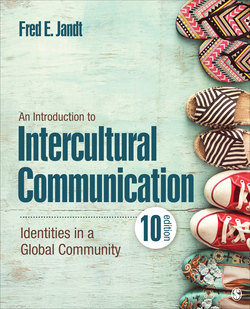Читать книгу An Introduction to Intercultural Communication - Fred E. Jandt - Страница 22
На сайте Литреса книга снята с продажи.
Focus on Skills 1.1 Applying Cultural Concepts
ОглавлениеThroughout this book, take note of special boxes marked Focus on Skills that identify intercultural communication skills appropriate to the content of that chapter.
Members of a culture share symbols and behavior norms, and identify as members of the culture. While families are not cultures, we can use that setting to explore the concept of culture.
Assume you have a sister, brother, or very close childhood friend. Think back to your relationship with that sibling or friend as a child. Probably, you remember how natural and spontaneous your relationship was. Your worlds of experience were so similar; you shared problems and pleasures; you disagreed and even fought, but that didn't mean you couldn't put that behind you because you both knew in some way that you belonged together.
Now imagine that your sibling or friend had to leave you for an extended period. Perhaps your brother studied abroad for a year or your sister entered the military and served overseas. For some time, you were separated.
1 Identify some of the experiences your friend or sibling had that may have changed your relationship in some way. For example, during the time your brother studied abroad, he likely acquired new vocabulary, new tastes, and new ideas about values. He uses a foreign-sounding word in casual conversation; he enjoys fast food or hates packaged food; he has strong feelings about politics.
2 Identify the ways that that separation changed how the two of you now communicate.
We can have no direct knowledge of a culture other than our own. Our experience with and knowledge of other cultures is limited by the perceptual bias of our own culture. An adult Canadian will never fully understand the experience of growing up as an Australian. To begin to understand a culture, you need to understand all the experiences that guide its individual members through life. That includes language and gestures; personal appearance and social relationships; religion, philosophy, and values; courtship, marriage, and family customs; food and recreation; work and government; education and communication systems; health, transportation, and government systems; and economic systems. Think of culture as everything you would need to know and do so as not to stand out as a “stranger” in a foreign land. Culture is not a genetic trait. All these cultural elements are learned through interaction with others in the culture.
This understanding of the concept of culture is common in popular literature and media in reference to national sources of identity. Thus people commonly think of national citizenship as one’s culture. Yet clearly within nations there are small groups that have continuity and that function as cultures in the sense that they regulate human behavior and provide important parts of identity. The terms subculture, co-culture, subgroup, counterculture, microculture, and community have been used to identify these groups. Each group has critical implications for its members’ identities.
